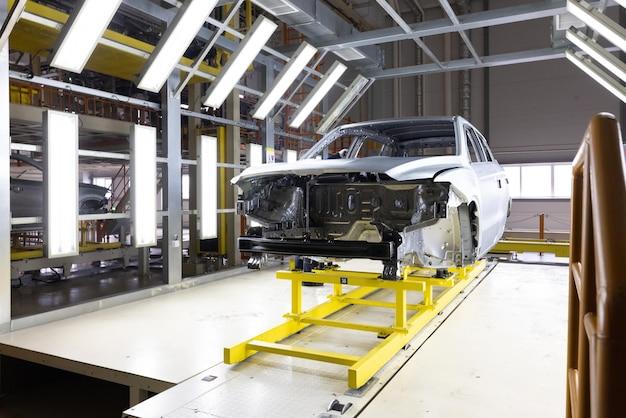The automobile industry is one of the most prominent and influential sectors in the global economy. With advancements in technology and changing consumer preferences, this industry is continuously evolving. Understanding the market structure of the automobile industry can provide valuable insights into how this vast industry operates.
In this blog post, we will delve into various aspects of the automobile industry’s market structure, including its characteristics, competition levels, and the role of key players. We will also touch upon related topics, such as the market structure of supermarkets and the concept of perfect competition. Additionally, we will uncover the prevailing market structure in the Indian automobile industry.
So, buckle up as we embark on a journey to unravel the intricacies of the automobile industry’s market structure and gain a deeper understanding of its functioning in the year 2023.
The Market Structure of the Automobile Industry
The automobile industry, also known as the car industry, is a fascinating and dynamic sector that plays a significant role in our daily lives. Whether you’re a car enthusiast or simply rely on four wheels to get from point A to point B, understanding the market structure of this industry is essential. So, let’s take a joyride through the highways and byways of the automobile market!
The Big Players: Oligopoly or Monopolistic Competition
When it comes to the automobile industry, there are a few big players that dominate the market. We’re talking about the legendary giants such as Ford, General Motors (GM), and Toyota. These companies have been around for decades and have established a strong foothold in the industry.
In terms of market structure, the automobile industry can be classified as an oligopoly. An oligopoly is a market structure characterized by a few dominant firms that have the power to influence prices and output. The competition among these big players is fierce, but they still manage to maintain their market share.
The Battle for Supremacy: Differentiation and Branding
In the world of automobiles, differentiation is the name of the game. Each company strives to create a unique identity for its vehicles and build a strong brand that resonates with consumers. Whether it’s luxury, safety, or fuel efficiency, car manufacturers use various strategies to set themselves apart from the competition.
Let’s take a trip down memory lane to the famous “Ford vs. Chevrolet” rivalry. These two companies have been battling it out for decades to capture the hearts and wallets of American car buyers. The Ford Mustang vs. the Chevrolet Camaro is just one example of their fierce competition, with both companies using innovative designs and marketing tactics to attract customers.
The Road Less Traveled: New Entrants and Disruption
While the big players hold a significant portion of the market share, the automobile industry is also open to new entrants. With the rise of electric vehicles (EVs) and self-driving technology, startups like Tesla have emerged as disruptors in the market. These companies bring innovation and new ideas that challenge the traditional players and shake up the industry.
Think about it: just a few years ago, the idea of electric cars dominating the market seemed like a distant dream. But now, with the advancements in technology and the push for sustainability, EVs have become a force to be reckoned with. Tesla, with its sleek designs and impressive performance, has paved the way for a new era in the automobile industry.
The Consumer’s Journey: Choices and Influences
When it comes to buying a car, consumers have a plethora of choices at their fingertips. From sedans to SUVs, hybrids to fully electric vehicles, the options seem endless. But how do consumers make their decisions in such a crowded market?
Influences play a significant role in the consumer’s journey. Factors such as price, fuel efficiency, brand reputation, safety features, and even social and environmental considerations can shape their decision-making process. Companies invest heavily in marketing and advertising to sway consumers towards their products, employing catchy slogans, memorable jingles, and captivating visuals to grab attention.
The Road Ahead: Future Trends and Outlook
As we cruise into the future, the automobile industry is poised for even more advancements and transformations. Electric vehicles are expected to become even more mainstream, with governments around the world pushing for a greener future. Self-driving technology is also on the horizon, with companies like Google’s Waymo and Uber’s autonomous vehicles revolutionizing the way we commute.
The market structure of the automobile industry will continue to evolve, influenced by changing consumer preferences, technological advancements, and environmental concerns. While the big players will still hold a prominent position, we can expect new entrants and disruptors to shake things up and keep the industry on its toes.
So, buckle up and enjoy the ride as the automobile industry races into the future, fueled by innovation, competition, and the ever-increasing demands of consumers. Just remember, whether you choose to go electric, stick with a classic gas-powered car, or opt for the middle ground with a hybrid, the choices are endless, and the road ahead is full of exciting possibilities.
FAQ: Market Structure of the Automobile Industry
Welcome to our comprehensive FAQ on the market structure of the automobile industry! From understanding the dominance of giant corporations to exploring perfect competition and everything in between, this FAQ will answer all your burning questions. So buckle up and let’s hit the road!
What is the Market Structure of the Automobile Industry
In the fast-paced world of automobiles, the market structure refers to the organization and characteristics of the industry. The automobile industry is considered an oligopoly, with a few major players dominating the market. These companies have significant control over prices and can often dictate the industry’s direction.
Is Amazon a Perfect Competition
Ah, Amazon! The e-commerce giant that seems to sell everything under the sun. While Amazon operates in various industries, the online retail sector it dominates is definitely not a perfect competition. Perfect competition is characterized by numerous small firms, identical products, ease of entry, and no market power. Amazon, with its vast market share and influence, doesn’t quite fit the bill.
What is the Market Structure of Supermarkets
When you stroll down the aisles of the neighborhood supermarket, you’re witnessing an example of an oligopoly market structure. Supermarkets, like the automobile industry, are dominated by a few major players. These giants compete fiercely for consumer loyalty and constantly tweak their pricing strategies to attract customers. Just think of those “buy one, get one free” deals that tempt us all!
What Industry Has Perfect Competition
Aah, perfect competition! The holy grail of market structures, where competition is at its peak. But wait, finding real-world examples of perfect competition can be as challenging as trying to find a parking spot on Black Friday. However, some economists believe that certain agricultural markets, such as wheat or corn, come close to fitting the perfect competition bill. Just think of all that corn-on-the-cob goodness!
Who Determines Price in a Perfect Market
In a perfect market, price is not determined by any single entity. Are you taken aback? Well, hang on! In this mythical land of perfect competition, prices are established through the forces of demand and supply. So, if you find yourself dreaming of a perfect market, don’t forget to bring along some good ol’ demand and supply curves to the party.
What is the Market Structure Prevalent in the Indian Automobile Industry
Curious to know about the market structure of the Indian automobile industry? Well, hop on for a ride! The Indian automobile industry is also an oligopoly, with a handful of heavyweight manufacturers dominating the market. From iconic two-wheeler brands to luxurious four-wheelers, these companies steer the industry, making it an exciting and ever-evolving journey.
And there you have it, folks! We hope this FAQ has satisfied your curiosity about the market structure of the automobile industry. Remember, understanding market structures is like having a roadmap for economic analysis. So whether you’re shopping for cars or simply pondering over the mysteries of economics, may you navigate through the twists and turns of market structures with style and confidence!
Stay tuned for more exciting articles on the fascinating world of economics. Vroom vroom!
Keywords: Market structure of the automobile industry, perfect competition, Amazon, market structure of supermarkets, industry with perfect competition, determination of price in perfect market, market structure in the Indian automobile industry.

